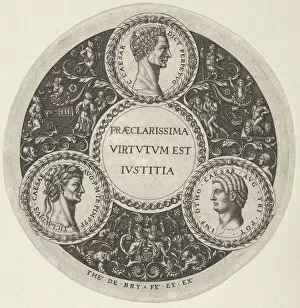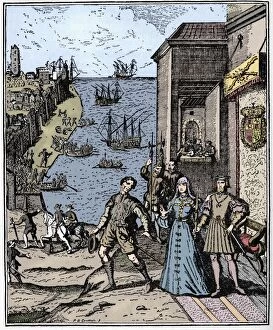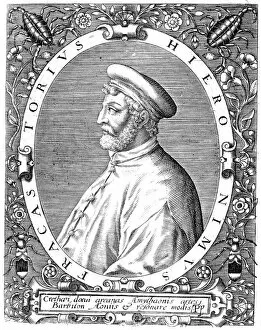Theodor De Collection
Theodor de Bry, a renowned creator of Emblemata Secularia in 1611, left an indelible mark on the art world
All Professionally Made to Order for Quick Shipping
Theodor de Bry, a renowned creator of Emblemata Secularia in 1611, left an indelible mark on the art world. His works captured various scenes and subjects with meticulous detail and artistic finesse. One such masterpiece is the Scene with Galants at a Banquet in a Circle at Center, dating back to 1580-1600. This captivating portrayal transports us to an opulent feast where elegantly dressed individuals engage in lively conversation. Another notable creation by De Bry is the Scene with a Feast of Love in a Circle at Center. Painted during the same period as his other works, this piece exudes passion and romance as it depicts couples reveling in each other's company amidst an enchanting setting. In addition to these captivating scenes, De Bry also delved into deeper themes through his artwork. The Scene with Misericordia and Veritas showcases two allegorical figures representing mercy and truth respectively. Through this composition, De Bry explores profound concepts that resonate even today. Furthermore, De Bry used his talent to raise awareness about important issues of his time. His Scene with a Warning Against Venereal Disease serves as both cautionary tale and educational tool against the dangers of such afflictions. De Bry's versatility is evident not only in his subject matter but also in his designs for dishes adorned with portraits of Roman emperors like Caesar, Claudius, Otho, Nero, Galba, Caligula, Vitellius, Domitian, and Augustus. These intricate designs showcase both historical accuracy and artistic flair. Moreover, the portrait of William I of Orange from De Bry's series of Tazza Designs captures the essence of this influential figure who played a significant role during that era. Lastly, the Spanish capture Fort Caroline painting immortalizes one pivotal moment in history when Spain asserted its dominance over Florida. The intensity depicted within this scene leaves viewers captivated by its raw emotion.













